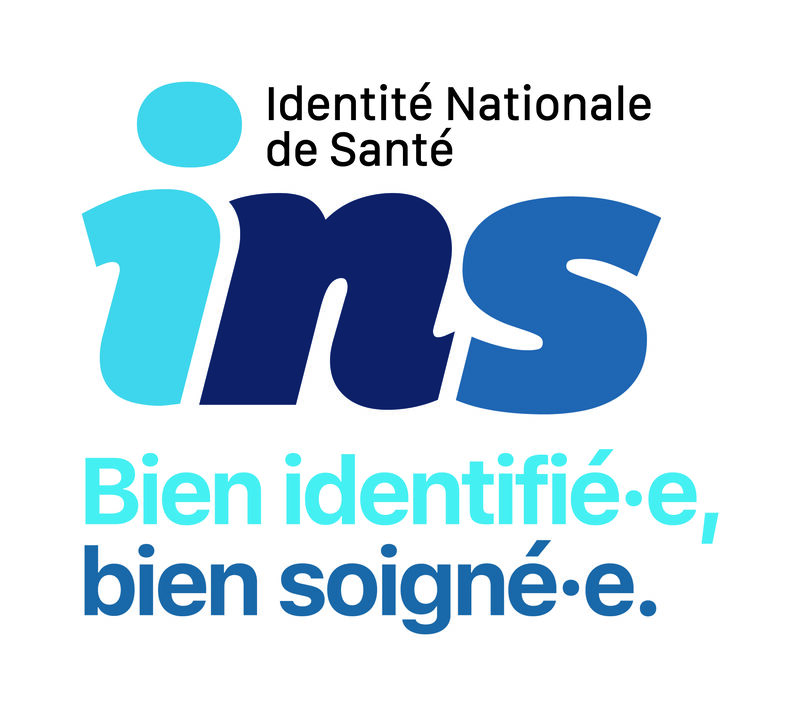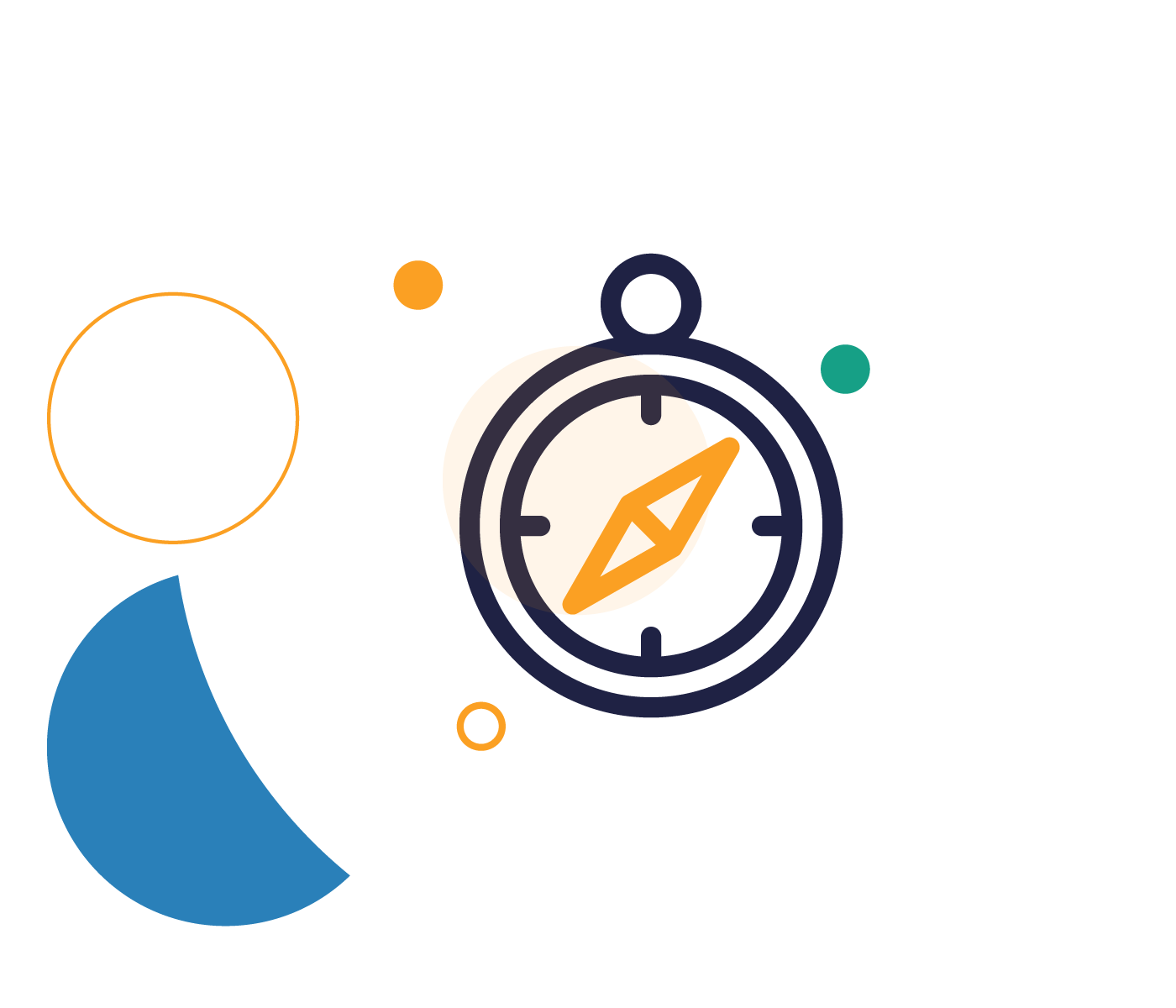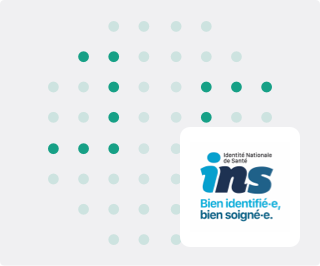National Health Identity (INS)
The National Health Identity (INS) enables healthcare data to be referenced with a unique, long-lasting identity shared by all healthcare professionals.
Getting started

Since January 1, 2021, all healthcare data must be referenced with the INS.This unique and long-lasting identity has been implemented to:
- Limit misidentification of people in care, monitored or accompanied;
- Have a reliable identity that facilitates the exchange and sharing of personal health data ;
- Contribute to thequality of care and the safety of care;
- Enable the accelerated deployment of digital exchange and sharing services in the healthcare sector.
How to use the INS?
The INS must be "qualified" in order to be used. To do this, two conditions are necessary:
- On the one hand, having retrieved or verified the INS from the INSi teleservice, which is backed up by the national reference bases (SNGI (CNAV) and RFI (Cnam);
- On the other, the user's identity must be validated in accordance with the rules and good practices of identitovigilance (RNIV) (verification of an identity document with a high level of confidence or electronic identification with a substantial level of guarantee).
The arrival of the carte Vitale application enables professionals to retrieve an already qualified identity, without having to use the INSi teleservice, either via Datamatrix scan or NFC.
The INS implementation guide
We guide you through the steps to take, the players to contact, the documentation to consult.

Understanding INS in 3 min

Regulatory framework
Law 2016-41 of January 26, 2016 on the modernization of our healthcare system
Decree no. 2019-1036 of October 8, 2019 amending decree no. 2017-412 of March 27, 2017
Order of December 12, 2024 amending the order of December 24, 2019 approving the reference system for the national health identifier
The INS standard describes the conditions and procedures for implementing the obligation to referencing health data with the INS.
Frequently asked questions
What does INS consist of?
- The INS number (NIR - numéro d'inscription au répertoire national des personnes physiques - or NIA - numéro identifiant attente - of the individual). In practical terms, this number corresponds to the social security number for those entitled to benefits, i.e. the vast majority of adults. For other insured persons, this number appears on their social security certificate and will be displayed in the digital health space (Mon espace santé);
- Five strict referencing traits (birth name, first name(s) at birth, date of birth, gender, place of birth).
What's in it for me?
As players in the healthcare and medico-social sectors, your customers are obliged to referencing the healthcare data they process with INS. Evolving your products thus enables you to offer your customers a solution that complies with regulations.
Find out more about CHU d'Allauch's experience: INS - retour d'expérience du Centre Hospitalier d'Allauch - YouTube
What happens if I don't?
If you're affected by the implementation of INS, you need to offer your customers an INS-compatible solution as soon as possible to enable them to comply with the obligation, which applies from January 1, 2021, to referencing all healthcare data with INS.To do so, consult our guided path on INS implementation.
Non-compliance with this obligation entails several impacts:
- Your customers will not referencing INS in their software, which will entail possible penalties vis-à-vis several schemes (Ségur, HOPEN, portal referencing in Mon espace santé, etc.
).
- Your customers will not be in compliance with regulations. They will therefore be liable in the event of misidentification of their patients and users.
- The exchange and sharing of healthcare data by your customers will be less fluid.
- The identity used by your customers will not be the referencing one, taken from civil registry databases.
Training
Access the various contents of the platform e-santé-formation
Our experts on the subject
Finding your way around technical doctrine
The technical doctrine presents the actions of the ministerial roadmap for the digital shift.

L'Identité Nationale de Santé (INS) : Un Tremplin pour l'Innovation en Santé Numérique
L'Identité Nationale de Santé (INS) is revolutionizing the healthcare landscape in France, offering fertile ground for innovators in the sector. This unique identification system, introduced in 2021, is transforming the management of healthcare data and catalyzing the development of innovative applications.
The INS in Detail
The INS consists of a unique matricule and a precise list of five identity traits: birth name, first names, date of birth, gender, and place of birth. This combination ensures unrivalled accuracy in identifying users of the French healthcare system, eliminating the risk of confusion between patients.
Security and Reliability: Cornerstones of the System
Data security is at the heart of INS. The INS repository, drawn up by the healthcare authorities, defines strict standards for the use and protection of this sensitive information. This framework guarantees confidentiality while facilitating access to relevant data for authorized healthcare professionals.
Opportunities for Innovation
For healthcare entrepreneurs, INS opens up new perspectives:
- Personalized Follow-Up Applications: Develop solutions that use INS to offer tailored medical follow-up, integrating the patient's complete history from birth.
- Care Coordination tools: Create platforms that improve communication between healthcare professionals, based on accurate patient identification.
- Predictive Analytics solutions: Leverage anonymized data linked to INS to develop predictive public health models.
- Medical Device Innovations: Design devices, such as smart probes, capable of automatically associating collected data with the patient's INS, ensuring perfect traceability.
Challenges and Considerations
Integrating INS into your innovative projects requires special attention:
- Repository Compliance: Ensure that your applications scrupulously respect the INS repository and the associated legal framework.
- Interoperability: Design solutions capable of seamlessly integrating with existing systems using INS.
- User training: Plan training modules to help healthcare professionals use INS effectively in your applications, with an emphasis on the precision required when entering data.
Future prospects
INS is paving the way for a new era of digital healthcare in France. Innovators have the opportunity to create solutions that not only improve the efficiency of the healthcare system, but also enrich the experience of patients, from birth to adulthood.
In conclusion, the National Health Identity is a powerful catalyst for innovation in healthcare. It offers immense potential for those who know how to exploit it creatively and responsibly, while scrupulously respecting the established repository. Whether you're developing applications, medical devices such as advanced probes, or data management platforms, INS invites you to rethink tomorrow's healthcare with precision and security.
.









